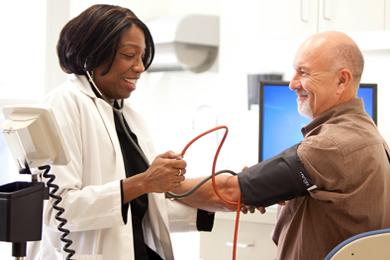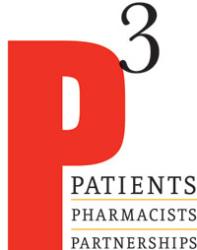New Case Study Shows Maryland P3 Program Can Improve Employee Productivity
Employees at Chesapeake Public Schools experience decreased health care costs and improved productivity through participation in program’s diabetes management services.
By Malissa Carroll
May 23, 2013
In January 2009, Chesapeake Public Schools (CPS) in Virginia entered into a partnership with the Maryland P3 Program at the University of Maryland School of Pharmacy. More than three years after its launch, this partnership, which was originally designed to help CPS employees with diabetes and their families better self-manage the disease , has shown measurable improvements in employees’ clinical and economic outcomes, as well as their productivity.
“We are extremely pleased with the results of this partnership to provide employees from Chesapeake Public Schools and their families with comprehensive medication therapy management, self-management coaching, and chronic disease management services,” says Magaly Rodriguez de Bittner, PharmD, BCPS, CDE, professor and chair of the Department of Pharmacy Practice and Science at the School of Pharmacy and director of the Maryland P3 Program. “The results of this partnership have shown that participants in the Maryland P3 Program not only experienced improved clinical outcomes, but also increased productivity in the workplace.”
According to the Virginia Department of Health, hospital costs in the state in 2006, the last year for which information is available, exceeded $225 million for patients with diabetes, with an average discharge cost of $19,000 per patient. Although the state’s population only grew 16 percent from 1995 to 2007, the prevalence of diabetes increased by 95 percent.
The Maryland P3 Program is a partnership of the School of Pharmacy, the Maryland Department of Health and Mental Hygiene’s Center for Chronic Disease Prevention and Control, and the Maryland Pharmacists Association. The program contracts with pharmacists to serve as medication experts working in collaboration with employees’ primary care providers to assist with proper use of medications, counseling, and overall disease state management. Launched in August 2006, the program has enrolled more than 700 patients at seven different organizations throughout the mid-Atlantic region.
After learning about the Maryland P3 Program through the Virginia Business Coalition on Health, of which both CPS and the Maryland P3 Program are members, James Ward, director of financial services and risk management for CPS, envisioned that the program could provide a cost-effective solution to patient-centered health education and chronic disease management for his employer.
“CPS was looking for ways to improve the health and quality of life for its employees and their families,” says Ward. “With assistance from the Virginia Business Coalition on Health and the University of Maryland School of Pharmacy, CPS implemented the Maryland P3 Program and, over time, found that participating employees showed improvements in three crucial clinical domains, including hemoglobin A1c, blood pressure, and LDL cholesterol.”
Through the Maryland P3 Program, participating CPS employees met with their chosen pharmacist between four to seven times each year, depending on their individual needs. The pharmacist worked with each employee to assess his or her knowledge and understanding of his or her chronic illness and medication regimen, including possible drug interactions and adverse effects, the importance of medication adherence, and the importance of annual eye, foot, and dental exams. Employees worked with their pharmacists to set personal goals, while the pharmacist maintained written and verbal communication with the employee’s primary care provider to ensure continuity of care.
“Participating employees also experienced increased productivity by requiring fewer sick days than other individuals with similar conditions who were not enrolled in the program,” adds Ward.
CPS’ cost-savings also exceeded expectations. Total savings, including improved employee productivity and decreased rates of absenteeism, amounted to $919,768, which includes $475,338 — or $1,047 per person — in indirect savings due to improved productivity. When the partnership was first established, CPS estimated its savings at $980 per participant. However, results reported this year showed a savings of $2,136 per participant as a result of a 22 percent decrease in the number of emergency department visits and hospitalizations for individuals participating in the program.
Rodriguez de Bittner, Ward, and Eileen Ciccotelli, MPM, vice president of the Virginia Business Coalition on Health, presented the results of this partnership at the 2013 Integrated Benefits Institute (IBI)/National Business Coalition on Health (NBCH) Health & Productivity Forum in Dallas, Tex., earlier this year. Their presentation was the only one to highlight a pharmacy-based program.



